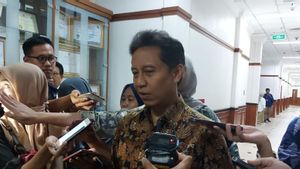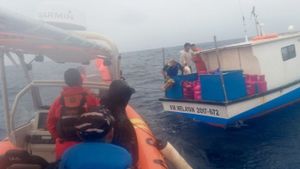JAKARTA - The National Research and Innovation Agency (BRIN) has begun to identify antracical isolates for the manufacture of oral vaccines in livestock animals as an effort to control cases of the spread of bacillus anthracis bacteria in Indonesia.
"We first check the isolat, if it is prospective, we will propose a vaccine," said a Young Expert Researcher from the BRIN Veterinary Research Center, Rahmat Setya Adji, as reported by ANTARA, Thursday, July 20.
Currently, the anti-ax vaccine that is widely circulated in the community is in the form of injection which sometimes causes neck swelling in goats.
The side effects made farmers reluctant to give vaccines to their livestock.
Rahmat said oral vaccines are safer and easier to apply because farmers can do it independently, so they can attract them to vaccinate livestock.
"Domestic vaccination activities are not as easy as giving vaccines to humans, so the challenges in the future are how to create vaccines that are easy to apply. People can do it themselves, we just need to distribute them, so that safe, affordable, cheap, and protective," said Rahmat.
He explained that antractic is a bacterial disease in domestic and wild animals, especially herbivore animals. This disease is caused by bacteria BAcillus anthracis which can produce a spora if exposed to oxygen.
If the infected animal is not slaughtered, then the bacteria are vegetative. However, when slaughtered and the blood of the infected animal is exposed to oxygen, it causes the extrax bacteria to form a spora.
Antrax Spora can spread quickly when exposed to rain water because it can flow up to rivers. However, the spora cannot survive in peatlands because the soil has a high acidity level.
Rahmat said the BETraks spora was able to last hundreds of years in dry areas. The longest survival for antracese sporax ranges from 150 to 200 years found in bones during archaeological excavations in South Africa.
"If the environment is not properly decontaminated, then the disease can appear," he said.
VOIR éGALEMENT:
The burning of animal carcasses infected with BETraks is the most effective decontamination to treat the disease. However, burning requires a large amount of cost and energy.
Decontamination by pouring disinfectant liquid at the location of slaughtering livestock exposed to anti-extraction is most likely to be applied. One of the disinfectant liquids that is widely used to kill antrax is the 10 percent formalin.
The decontamination process requires 50 liters of disinfectant liquid for every one square meter.
Livestock that have gone through the decontamination stage must be buried and coated with cement in order to become a sign that the location is a grave for animals exposed to anti-extraction, so that humans do not dig the tomb again.
"If there are animals that die suddenly, they must be watched out for. Attractive animals cannot be opened (red: slaughtered) because the sporamology can last hundreds of years," concluded Rahmat.
The English, Chinese, Japanese, Arabic, and French versions are automatically generated by the AI. So there may still be inaccuracies in translating, please always see Indonesian as our main language. (system supported by DigitalSiber.id)












